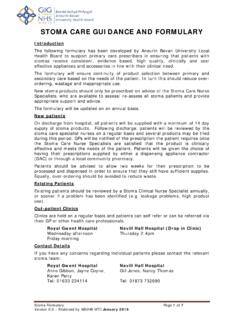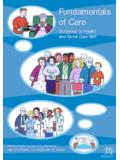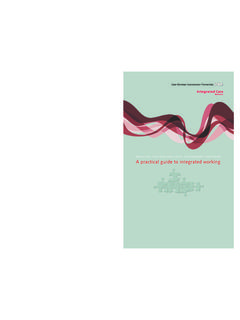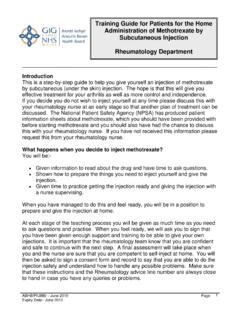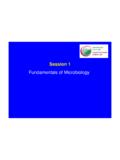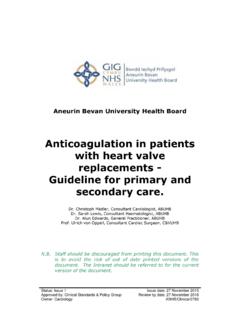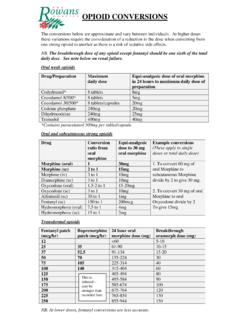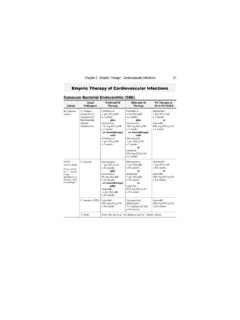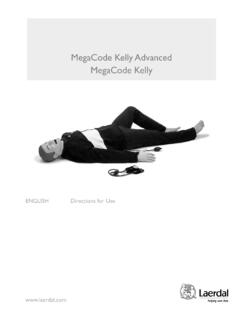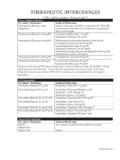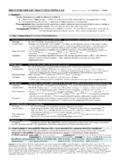Transcription of ANTIMICROBIAL STEWARDSHIP - Health in Wales
1 ANTIMICROBIAL STEWARDSHIP : START SMART - THEN FOCUS Guidance for ANTIMICROBIAL STEWARDSHIP for Hospitals in Wales ANTIMICROBIAL STEWARDSHIP : Start Smart - then Focus Right Drug, Right Dose, Right Time, Right Duration -Every time. Current evidence clearly demonstrates that the inappropriate use of broad-spectrum antibiotics is associated with the selection of antibiotic resistant bacteria such as Extended- Spectrum Beta-Lactamase (ESBL)-producing Gram-negative bacteria as well as the specific acquisition of MRSA and the induction of Clostridium difficile infection (CDI). In particular, it has been recommended that the use of broad spectrum antibiotics such as cephalosporins, quinolones and broad-spectrum penicillins (including co-amoxiclav) and clindamycin should be avoided unless there are clear clinical indications for their use.
2 Data published by the Welsh ANTIMICROBIAL Resistance Programme shows that resistance in E. coli and other coliforms is increasing The data also shows significant variability in antibiotic use across Wales with stable use in some Health Boards, and increasing use in others. Control of Antibiotic use can control the spread of resistance, support reductions in CDI, and reduce unnecessary expense. An ANTIMICROBIAL STEWARDSHIP programme is seen as a key component in the reduction of HCAI infections in a healthcare setting. The elements of an ANTIMICROBIAL STEWARDSHIP Programme should include the following: An ANTIMICROBIAL STEWARDSHIP Committee or Management Team: A multidisciplinary Committee should be set up to develop and implement the Health Board s ANTIMICROBIAL STEWARDSHIP programme for all adults and children admitted to hospital.
3 The committee/team should report to the organisation s Director of Infection Prevention and Control/ Infection Control Committee and the Drugs and Therapeutic Committee (or equivalent). The key roles of the ANTIMICROBIAL STEWARDSHIP committee should be to: o Ensure that evidenced based local ANTIMICROBIAL guidelines are in place and reviewed annually. o Ensure regular auditing of the guidelines, ANTIMICROBIAL STEWARDSHIP practice and quality improvement measures. o Formally report a regular review of the organisation s retrospective antibiotic consumption data. o Identify actions to address non-compliance to local guidelines, ANTIMICROBIAL STEWARDSHIP guidelines and prescribing issues highlighted.
4 In addition to the committee/management team, it is suggested that organisations develop an ANTIMICROBIAL STEWARDSHIP Ward Focused Team ( ANTIMICROBIAL pharmacist and/or consultant microbiologist) that report to the Committee/Management Team and are available to review prescriptions at ward level if required. Evidence based ANTIMICROBIAL prescribing guidelines: It is recommended that evidence based local guidelines for the diagnosis and treatment of common infections and for prophylaxis of infection should be drawn up by each organisation based on national guidance. Prescribers should to adhere to guidelines and adherence should be monitored and supported by senior clinicians and pharmacists.
5 Goals of local prescribing guidelines should be to: o Minimise unnecessary prescribing of antimicrobials by providing clear clinical case definitions and associated evidence of infection. o Emphasise the need for infection prevention and control precautions where appropriate. o For severe or life-threatening infection, emphasise the urgent need to start treatment with broad-spectrum antibiotic agents (particularly where the source of infection is uncertain). o For less severe infection, offer antibiotic agent(s) with an adequate spectrum to cover only the expected pathogens. o Remind prescribers to consider the risk of resistant pathogens such as MRSA or ESBL-producing organisms, and offer alternative treatment regimens accordingly, or encourage prescribers to seek expert advice.
6 O Highlight the importance of checking allergy status and offer alternative treatment choices for patients intolerant of recommended antibiotic agents. o Require prescribers to take appropriate specimens for microbiological investigation before starting antibiotic treatment wherever possible, but not to delay starting treatment in patients who are severely ill. o Recommend intravenous administration only to patients who are severely ill or unable to tolerate oral treatment. o Recommend antibiotic doses, and remind prescribers to adjust dosing in renal or hepatic impairment. o Require prescribers to review microbiology results daily, and de-escalate to pathogen-directed narrow-spectrum treatment promptly.
7 O Require prescribers to review the need for intravenous treatment daily, and switch to the oral route of administration promptly according to local IV-to-oral switch guidance. o Offer oral switch choices for intravenous antibiotics. o Provide advice regarding monitoring and follow-up and contingency advice for treatment failure. o Suggest typical treatment course length for intravenous and oral agents. o Require single dose surgical prophylaxis regimens as appropriate. Quality Improvement Measures/Audits: Procedures should be in place to ensure prudent antibiotic prescribing and ANTIMICROBIAL STEWARDSHIP . There should be an ongoing programme of audit, revision and update monitored by the ANTIMICROBIAL management team.
8 O A multi-disciplinary quality improvement/audit programme for ANTIMICROBIAL STEWARDSHIP should be developed and sustained in each Health Board. Regular (at least annual) feedback of adherence to prescribing standards should be provided to the Trust Board (as part of the annual infection control committee (or equivalent) report), prescribers, lead clinicians and microbiologists, nurses, pharmacists and the DIPC. o The ANTIMICROBIAL STEWARDSHIP Committee/Management Team should review antibiotic consumption trends regularly (at least annually). o Action should be taken to investigate and address non-adherence to best practice for antibiotic prescribing or unexpected trends in prescribing.
9 Quality improvement measures and audits should include: o Monitoring total antibiotic consumption (at least annually). o Regular monitoring/audit of compliance to components of the ANTIMICROBIAL STEWARDSHIP algorithms and best practice for antibiotic prescribing. Examples include: % of antibiotic prescriptions that follow local antibiotic policy/guidelines. % of patients with evidence of clinical review and decision at 48 hours. Use of the five options after clinical review as auditing interventions % of IV to oral switch, % of OPAT, % changed to narrow spectrum antibiotic, % of ward based interventions. The All- Wales ANTIMICROBIAL Point Prevalence Study (PPS) may be used as a method of collecting data to monitor compliance and for use as evidence of compliance with patient safety measures ANTIMICROBIAL STEWARDSHIP : Start Smart then Focus All Clinicians should ideally within one hour (or as soon as possible) - START SMART: Initiate prompt effective antibiotic treatment within one hour (or as soon as possible) in patients with life threatening infections Document on drug chart and in medical notes.
10 Route, Indication, Dose, Duration (RIDD) Antibiotics in hospitals are often continued unnecessarily because clinicians caring for the patient do not have information indicating why the antibiotics were initially commenced and how long they were planned to be continued. This challenge is compounded where primary responsibility for patient care is frequently transferred from one clinician to another. Ensuring that all antibiotic prescriptions are always accompanied by an indication, the correct dose and a clear duration will help clinicians change or stop therapy when appropriate. Obtain Cultures First Knowing the susceptibility of an infecting organism can lead to narrowing of broad spectrum therapy, changing therapy to effectively treat resistant pathogens and stopping antibiotics when cultures suggest an infection is unlikely.
